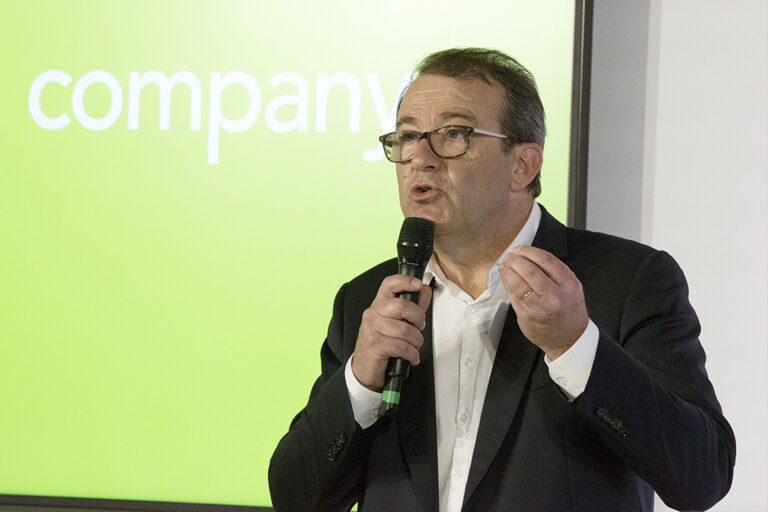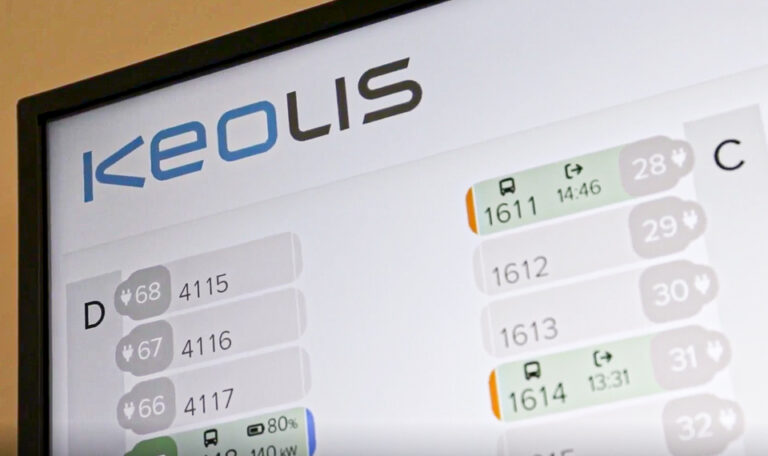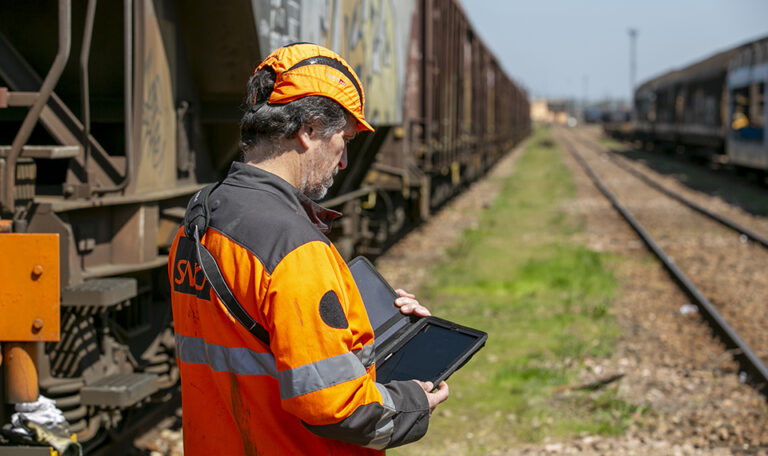Vu sur le web – SNCF is using the IoT – without the IoT
From iPads to predict track maintenance to Lidar devices building a digital simulation of the rail network, France’s public rail company is always innovating
Publié le
Par La Redaction

France’s public rail company, the Société Nationale des Chemins de fer Français (SNCF), is not only updating its backend IT systems as part of its digital transformation, but also trialling industrial projects – with very different budgets – to improve performance for the traveller.
Two of the most significant programmes are known as Vibrato and Lidar. These are helping the company to move from a corrective maintenance model on the railway tracks to one of predictive maintenance.
Vibrato aims to measure the vibrations in the tracks to forecast where maintenance will be needed. It could have used a host of bespoke IoT sensors, but SNCF has worked out how to do the same thing using just consumer tablets.
“Vibrato is an interesting project, because we are able to do some IoT things without [dedicated] sensors, or using existing sensors: which is very performant in terms of quality of the information, and also in terms of economy,” SNCF’s CIO Benoit Tiers told Computing.
“The IoT is costly. It means maintenance on the sensors, changing the batteries and so on… We have 15,000 trains each day, and [as part of Vibrato] in each train you have a tablet, like an iPad…and those have an accelerometer, a gyroscope. Rather than putting new sensors on the trains, we can use the sensors we have in those tablets.”
15,000 custom-made IoT sensors would stretch even an enterprise-scale IT budget, but using consumer tablets is expected to save SNCF a huge amount. While the system is still being tested, the firm expects medium-term cost-savings of between 10 and 20 per cent.
A common criticism – or sometimes defence – of public companies is that they lack the budget to do more than ‘keep the lights on’ – and you could be forgiven for thinking that the same applies at SNCF, considering the work on Vibrato. However, the company has actually created a €900 million fund for digital projects over the next three years. “Digital improves the performance of the company, so we decided to invest,” explained Tiers.
€2 million of that money is going to a project called Lidar (a technology similar to radar but using pulses of light instead of sound). Companies trialling autonomous cars, including Uber, Waymo and Apple, use it to help the vehicles perceive their surroundings.
SNCF is using the technology in a similar fashion, to build a ‘map’ of its physical rail network and the immediate surroundings, like trees and signal boxes. “The goal is to be able to have a digital network: a digital twin [to the physical],” said Tiers.
That digital twin would be a virtual version of the entire rail network, which SNCF will use to test how any planned changes will play out in reality, then use that data to inform future decisions.
“The goal is to improve all of our industrial operations, and to not have to do that in reality, but be able to do it virtually. It will save time…
“Just to compare: to perfectly know the [rail] network, we can now do in one hour what we did in six weeks previously – and the precision is on another level.”
At the time of writing, SNCF is using three trains (‘monitors’) with three Lidar sensors each. With the cheapest industrial Lidar devices starting at £50,000, it is easy to see where at least part of that €2 million budget has gone.
The monitor trains are collecting data on SNCF’s 30,000km of tracks throughout France now. By the end of next month, the company will start to analyse the first results. Tiers said, “We’ll see…if we made the right choice – but I’m pretty sure that we have.”
Journaliste : Tom Allen
Source : www.computing.co.uk


